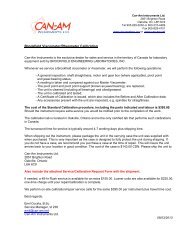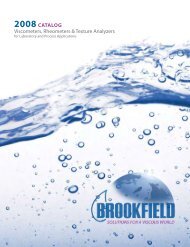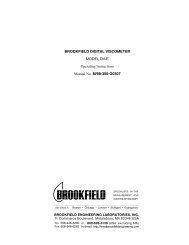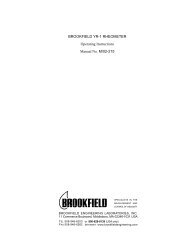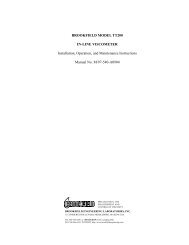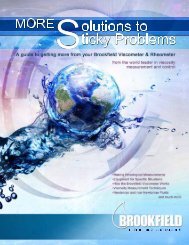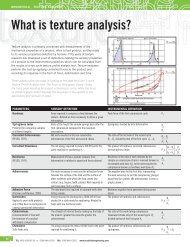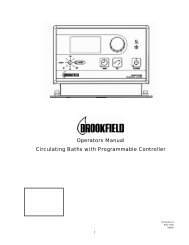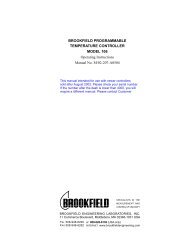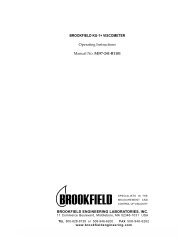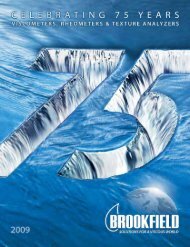Operators Manual Circulating Bath with Digital Controller
Operators Manual Circulating Bath with Digital Controller
Operators Manual Circulating Bath with Digital Controller
Create successful ePaper yourself
Turn your PDF publications into a flip-book with our unique Google optimized e-Paper software.
2.3 Reservoir FluidsUse distilled water for temperatures from 10° to 100°C or a mixture of laboratory grade ethylene glycoland water for temperatures below -20°C. The fluid must be chemically compatible <strong>with</strong> the reservoirand <strong>with</strong> 300 series stainless steel in the pump and heater. The fluid must also be able to produce thetemperature range desired.For temperature stability of ±.05°C, the viscosity should be 50 centistokes or less at the lowestoperating temperature to allow good fluid circulation and to minimize heating from the pump. Most heattranser fluids will be able to stabilize to ±.05°C over a 100°C range. Use fluids that will satisfy safety,health and equipment compatibility requirements.The chart below will help in selecting a fluid for your application. Stay <strong>with</strong>in the fluid’s normal range forbest temperature stability, low vaporization, and safety.You are responsible for proper selection and use of the fluids.Extreme range operation should be avoided.FLUID DESCRIPTION SPECIFIC HEAT NORMAL EXTREME@25°C RANGE RANGEWater 1.00 10°C — 90°C 2°C — 100°CEthylene Glycol 30% / Water 70% .90 0°C — 95°C -15°C — 107°CEthylene Glycol 50% / Water 50% .82 -20°C — 100°C -30°C — 100°CEthylene Glycol 100% .62 50°C — 125°C 0°C — 125°C*Dynalene-HC 50 .76 -50°C — 60°C -62°C — 60°CDC510 50 cs Silicone Oil .39 50°C — 150°C 5°C — 270°C*DC550 125 cs Silicone Oil .42 100°C — 200°C 80°C — 315°C**WARNING - Fluid’s flashpoint temperature.DC fluids are manufactured by Dow Corning. Dynalene HC is a registered TM of Advanced Fluid Technologies, Inc.DO NOT USE THE FOLLOWING FLUIDS:1. Automotive antifreeze <strong>with</strong> additives*2. Hard tap water*3. Deionized water <strong>with</strong> a specific resistance > 1 meg ohm4. Any flammable fluids5. Concentrations of acid or bases6. Solutions <strong>with</strong> halides: chlorides, fluorides, bromides, iodides or sulfur7. Bleach (Sodium Hypochlorite)8. Solutions <strong>with</strong> chromates or chromium salts* At temperatures above 40°C, additives or mineral deposits can adhere to the heater. If allowed to build up, the heatermay overheat and fail. Higher temperatures and higher concentrations of additives will cause a faster deposit build up.If buildup occurs see Section 3 Maintenance - Heater.WARNING: Do not use a flammable liquid as a fire hazard may result.6



